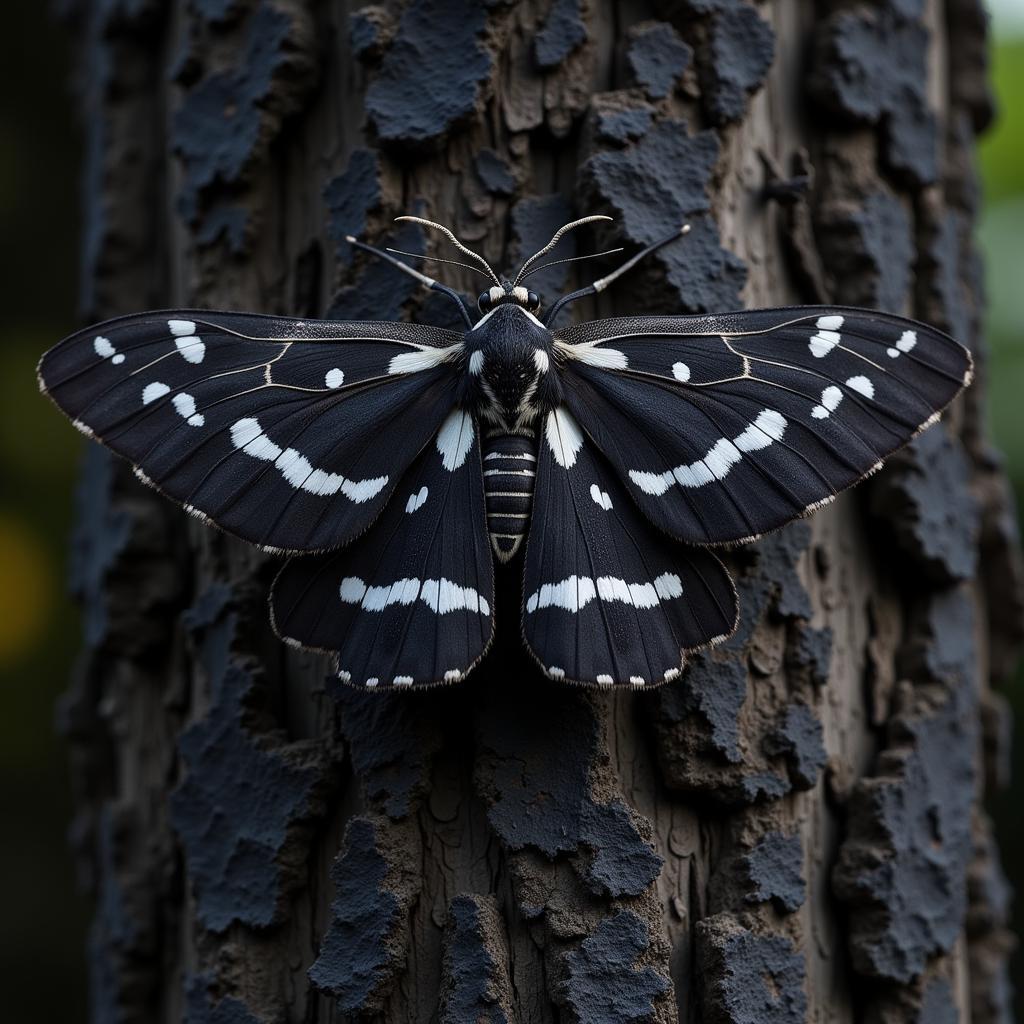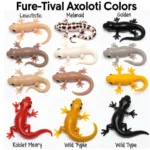The question “What Color Is The Carbonaria Version” often refers to the melanistic, or dark, form of an animal species, most notably the peppered moth (Biston betularia). Understanding the coloration of the carbonaria form requires delving into genetics, evolution, and natural selection. This article will explore the fascinating world of the carbonaria version and its significance in the study of adaptation.
Unraveling the Dark Hues of the Carbonaria Form
The carbonaria form, characterized by its dark pigmentation, stands in stark contrast to the typical lighter, speckled appearance of many species. This dark coloration is caused by a genetic mutation that increases the production of melanin, the pigment responsible for dark colors in animals. While the specific genes involved might vary across species, the underlying principle remains the same: increased melanin leads to a darker overall appearance.
The Peppered Moth: A Classic Example of Carbonaria Coloration
The peppered moth provides a textbook example of the carbonaria phenomenon. The typical form of this moth is light-colored with dark speckles, providing excellent camouflage against lichen-covered tree bark. However, during the Industrial Revolution, soot blackened the trees, making the lighter moths more visible to predators. This gave a selective advantage to the darker carbonaria moths, which blended seamlessly with the soot-covered bark.  Peppered Moth Carbonaria Form Camouflage
Peppered Moth Carbonaria Form Camouflage
Beyond the Peppered Moth: Carbonaria in Other Species
The carbonaria form isn’t limited to peppered moths. It has been observed in a variety of other species, including ladybugs, snakes, and even some mammals. In each case, the dark coloration offers a specific advantage in the environment, be it camouflage, thermoregulation, or protection from UV radiation.
Adaptive Advantages of Carbonaria Coloration
The advantages of carbonaria coloration can be diverse:
- Camouflage: As seen in the peppered moth example, dark coloration can provide superior camouflage in darkened environments.
- Thermoregulation: Darker colors absorb more heat, which can be beneficial in colder climates.
- UV Protection: Melanin can absorb harmful UV radiation, protecting the organism from sun damage.
Genetic Basis of the Carbonaria Phenotype
The carbonaria phenotype is typically inherited as a dominant trait, meaning that only one copy of the mutated gene is needed for the dark coloration to be expressed. The specific mutations responsible for carbonaria have been identified in some species, offering valuable insights into the genetic mechanisms underlying color variation.
The Role of Natural Selection
Natural selection plays a crucial role in the prevalence of the carbonaria form. In environments where dark coloration confers an advantage, carbonaria individuals are more likely to survive and reproduce, passing on their genes to the next generation. This leads to an increase in the frequency of the carbonaria form within the population.
What Color is Carbonaria Exactly?
The color of the carbonaria version isn’t a single, uniform shade. While generally described as “dark” or “black,” the actual color can vary from dark gray to deep black, and even exhibit subtle brown or bluish hues depending on the species. This nuance is essential when studying specific carbonaria variations.
Conclusion
The question, “what color is the carbonaria version,” leads us on a journey through genetics, evolution, and the fascinating interplay between organisms and their environment. The carbonaria form, with its dark coloration resulting from increased melanin production, showcases the power of natural selection to shape the appearance and survival of species. Whether it’s a moth on a soot-covered tree or a snake on the forest floor, the carbonaria phenomenon offers a compelling example of adaptation in action.
FAQs
- Is carbonaria always black?
- What causes the carbonaria mutation?
- Are there any disadvantages to being carbonaria?
- How does climate change affect carbonaria populations?
- Can the carbonaria form revert back to the typical form?
- What other examples of melanism exist in nature?
- How do scientists study carbonaria genetics?
Need support? Contact us at Phone: 0373298888, Email: [email protected] or visit us at 86 Cau Giay, Hanoi. Our customer service team is available 24/7.
